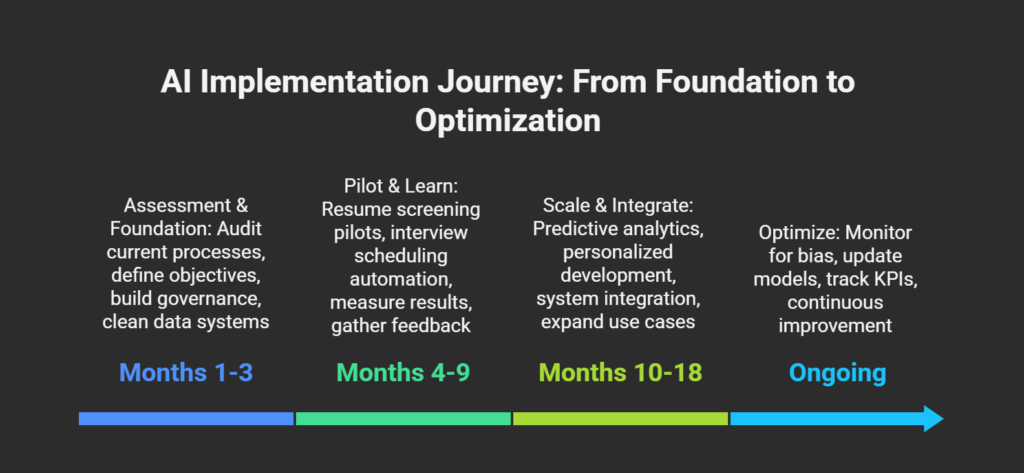Recent research shows that millennials constitute 35% of the worldwide workforce, and among them, 33% prefer collaborative workspaces. Teamwork is essential to every organization’s success. It enables effective leadership by harnessing employees’ strengths and skills, aligning them toward common objectives. Effective teamwork empowers leaders to strategize solutions, foster innovation, and drive growth.
Understanding the leadership attributes essential for successful teamwork equips organizations to cultivate strong teams that deliver impactful results. Discover how seamlessly merged teamwork and leadership can propel an organization toward enhanced performance and productivity.
Understanding Leadership and Team Effectiveness
Successful leadership and effective teamwork go hand in hand. The foundation of successful leadership lies in fostering teamwork within the organization.
Organizations can create a supportive and productive environment by leveraging team members’ strengths and skills. This collaborative approach encourages employees to share ideas, insights, and experiences. It is essential for tackling complex projects and finding innovative solutions.
Trust, strong relationships with co-workers, high morale, and motivation contribute to building great teamwork where individuals feel a sense of belonging. However, what makes teamwork successful is great leadership. Leaders must build collaboration and trust within their teams and establish clear communication channels. A leader’s responsibility is to ensure everyone on the team is heading in the right direction.
Good leadership facilitates teamwork by:
- Providing a clear vision for the team.
- Developing strategies for achieving the vision.
- Using each team member’s strength to drive performance.
- Challenging the team to be creative and continuously refine their skills.
- Tracking team progress and guiding the team to remain on track.
How can Leadership Help Increase Team Effectiveness?
Teamwork is a dynamic and intricate process that involves individuals bringing diverse skills, talents, experiences, personalities, and academic backgrounds to the table. The key lies in leveraging these unique strengths collaboratively, fostering enhanced performance and productivity through continual effort and dedication to the team’s shared goals.
Given the defined timeline for fulfilling group responsibilities, each team member bears a responsibility to contribute equitably to the team’s overarching objectives. Leaders here play the role of a mentor, motivator, and keeper of the group’s goals.
Leaders guide individuals in focusing their attention and channeling energy toward the team’s goals. They play a crucial role in orchestrating the rhythm and flow of the team, occasionally prompting members to showcase their unique talents. Now, let’s delve into four key ways through which adept leaders can actively foster effective team-building and cultivate a seamless culture of teamwork:
-
Facilitate Participatory Decision-Making
Decision-making is an important element of teamwork. It is extremely helpful in making the team work together better. A proficient leader excels at making prompt and decisive choices, ensuring seamless team dynamics without exposing the business to significant risks.
A democratic decision-making process that involves all team members fosters a sense of belonging and ownership. A leader must consider the opinions and inputs of all the team members. This ensures that every member feels valued and, thus, will have a sense of responsibility for the ongoing team projects.
-
Establish Accountability
Knowing what you are doing and how it contributes to a goal keeps you motivated. Leaders must ensure that team members receive clear, accurate, and well-thought-out feedback from their managers. This helps the team members know that the company monitors and takes their progress seriously. It also lets each department and individual identify areas that need improvement to benefit the company and the team.
A constant feedback process promotes communication between employees and their managers, creating a culture of collaboration and cooperation. A survey by Inc. Magazine found that companies supporting a transparent and constant communication culture are 4.5 times likelier to retain and engage the best talent than companies that do not.
Also read: Set SMART Goals and Avoid These 4 Goal-Setting Mistakes
-
Set a Vision-Focused Mindset
Teams should align and orient themselves around the vision to produce optimal outcomes. Leaders must consistently emphasize the company vision in every discussion or meeting. A proficient leader highlights how various decisions will impact the ultimate goal and assesses whether new changes align with the vision. These clear explanations aid team members in adopting a unified mindset.
Once mindsets align, a sense of teamwork easily develops, as each member is on the same page as others.
-
Recognize Team and Individual Efforts
According to a survey, nearly 46% of employees left their jobs because they felt unappreciated. Another 65% of respondents stated they would be motivated to perform better if their efforts were recognized by the organization. More interestingly, 65% of employees said they would feel motivated even if their boss remains unappreciative, but co-workers appreciate them.
Leaders recognize that acknowledging both team and individual successes is essential for fostering unity among team members. When members go unnoticed for their efforts, they may experience demotivation and a sense of disconnection from the rest of the team. Therefore, leaders must provide timely and well-deserved recognition to their team members.
Also read: Effective Strategies on How to Develop Leaders in the Workplace
How to Enhance Teamwork Through Leadership Development?

-
Identify Talent Champions
Line managers play a crucial role in identifying promising leadership candidates. They have the capacity to oversee up to 90% of their subordinates’ development through on-the-job training, individual coaching, and mentoring. Hence, the initial step is to designate line managers as “talent champions.” These champions will bear the responsibility of recognizing the significance of cultivating a pool of potential leaders.
According to a survey, talent champions exhibit greater responsibility in training employees in emerging skill sets compared to their counterparts. This responsibility holds more weight than formal job requirements, especially when combined with an effective recognition program during coaching and mentoring. However, it’s essential to acknowledge that talent champions may not have been prepared as adept trainers in their prior experiences, necessitating that the company provide them with the necessary support and resources for the task.
-
Assess Current Needs
Organizations need to focus on addressing competency gaps within their teams by conducting a talent review and crafting a strategic plan. Subsequently, managers and the executive team can develop an organizational calendar that includes special projects, board presentations, and additional opportunities for emerging leaders to gain valuable experience.
The key lies in identifying activities that the organization already undertakes and providing a platform for rising stars to showcase their abilities. This approach incurs minimal cost and disruption to regular operations. For instance, potential candidates could be tasked with preparing presentations for the board or other critical stakeholders, or they could collaborate with cross-functional teams as part of their developmental journey.
-
Create and Prioritize Development Activities
Once senior leadership has identified the talent and the activities for developing their leadership skills and competencies, line managers can step in. Line managers conduct development discussions with each candidate, delving into employee aspirations, career goals, trajectories and providing an honest assessment of the skills and competencies they need to focus on.
-
Monitor and Evaluate Development Plans
In organizations where development is a pivotal aspect of workplace culture, it’s often sufficient for senior leaders to monitor progress informally. They can check in with the responsible individuals, offering feedback and guidance on an ad-hoc basis. These frequent check-ins ensure there are no surprises during annual performance evaluations.
Conducting evaluations of leadership development plans at least semi-annually is a commendable practice. This aids in identifying and addressing any challenges and making necessary modifications. For instance, talent champions and senior leaders might consider scheduling reviews to coincide with major milestones in the development plan. To minimize disruption, organizations can seamlessly integrate these progress reviews into their pre-existing performance evaluation processes.
Summing Up
Successful organizations understand the intrinsic connection between leadership and teamwork, leveraging it as a strategic advantage for achieving optimal results. In navigating the complexities of the modern workforce, this strategic alignment ensures that leadership provides the necessary guidance for fostering teamwork that is not only effective but also adaptive to the ever-evolving demands of the business landscape.
Engagedly offers a comprehensive platform that enhances internal communication and promotes a smooth workflow within teams. This cloud-based software seamlessly integrates with existing organizational systems, allowing for easy adoption. With its capabilities, the platform facilitates the effective sharing of information, company updates, team development initiatives, and more. By fostering communication and promoting knowledge sharing, Engagedly empowers businesses to thrive. Schedule a demo today!
Frequently Asked Questions
-
How can leadership development initiatives contribute to effective teamwork within an organization?
Leadership development initiatives contribute to effective teamwork by fostering skills such as participatory decision-making, strategic vision-setting, and the recognition of individual and team contributions. This, in turn, creates a collaborative culture that aligns with organizational goals.
-
What role does accountability play in enhancing team efficiency?
Accountability is integral to enhancing team efficiency, as it ensures that team members are aware of their roles, responsibilities, and contributions. Transparent feedback mechanisms and performance evaluations promote accountability, encouraging a culture of collaboration, cooperation, and continuous improvement.
-
How does recognizing individual and team efforts impact overall team dynamics?
Recognizing individual and team efforts positively impacts team dynamics by fostering a sense of belonging and motivation. Acknowledging contributions creates a culture of appreciation, reducing the risk of demotivation, and promoting a cohesive and engaged team environment.




























 The best way to attract and retain great employees is to provide a positive candidate experience. It includes everything from ensuring you have a strong onboarding program to clear communication about the next steps along the journey.
The best way to attract and retain great employees is to provide a positive candidate experience. It includes everything from ensuring you have a strong onboarding program to clear communication about the next steps along the journey.














